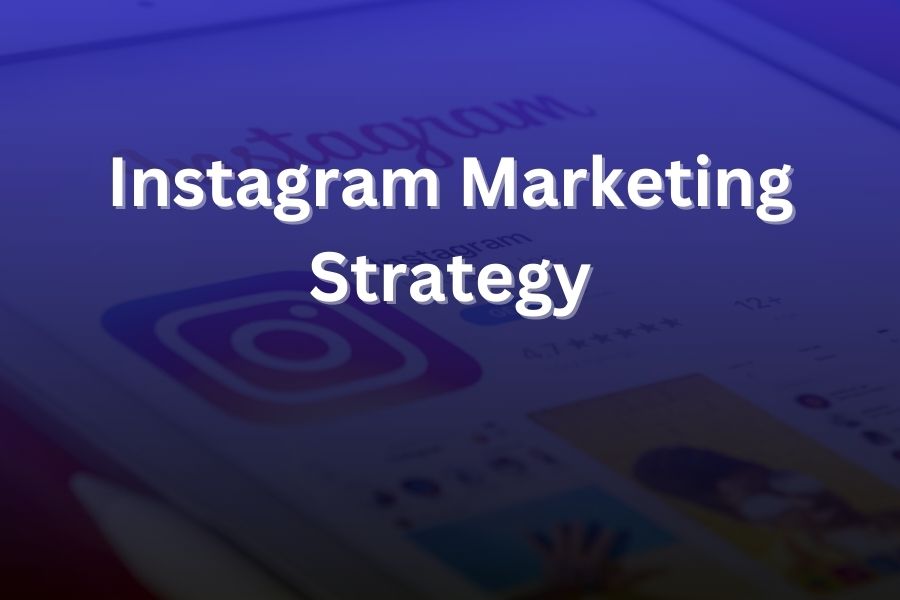Instagram Marketing Strategy That Drives Results

If you want to win at Instagram marketing, you need a strategy built on clarity, consistency, and insight. You can’t simply post and hope—it takes planning, data, and smart content. Whether you’re building brand awareness or driving sales, you’ll benefit from proven methods and real metrics.
In this article, you’ll learn how to set goals, identify your audience, create standout content, use analytics, engage authentically, leverage paid tools, and refine your approach for continued growth.
Define Clear Goals
Start by asking why you’re using Instagram. Are you aiming to increase brand recognition, generate leads, drive e-commerce sales, or build a community? Every post, story and Reel should tie back to one of those objectives.
Next, assign concrete metrics. For example: grow followers by 15 % in six months, boost engagement to 3 % per post, or increase website clicks by 20 % for a campaign. When you set targets, you can measure progress and stay focused.
Don’t try to achieve everything at once. Pick one primary goal, then build secondary goals around it. Your Instagram content calendar and formats should support your goal.
Understand Your Audience
Knowing your audience matters. Use insights from your website, other social platforms and customer segments to identify age, gender, location, interests, income, challenges and motivations.
On Instagram, you can use built-in analytics to see who engages with your posts, what times they’re active and what content they prefer. Monitor hashtags and competitor followers to map what your audience already responds to.
Once you know who you’re talking to, tailor the tone, visuals and offers accordingly. A young audience might prefer playful Reels and UGC, while a more mature audience may value how-to videos or product education.
Audit Competition and Market Position
Conduct a competitive audit. Look at 3-5 brands in your niche. Note their account structure, visual style, post frequency, hashtag use, captions, engagement rates and follower growth. Identify what they do well and what they don’t.
Then define how you’ll differentiate. Can you offer deeper educational content? Or tell a more personal story? A unique voice, a strong value proposition and consistent aesthetics help you stand out.
Use your findings to set benchmarks for yourself. For example, if your competitor averages 0.8 % engagement, aim for 1.2 % within three months by improving your content and posting habits.
Optimize Your Profile
Your Instagram profile must reflect your brand’s identity instantly. Use a clear profile photo, consistent bio, branded name and handle, and a concise link that serves your goal (e-commerce, lead magnet, blog, etc.).
Highlight your value proposition in the bio. Example: “Helping media professionals grow their impact. Cinematographer & editor sharing tips.” Use keywords sparingly for clarity. Include a call-to-action like “Tap to join free case study”.
Switch to a Business or Creator account for analytics access, contact options and ad tools. Keep the profile public so new visitors can follow or explore easily.
Use Story Highlights to pin evergreen themes (case studies, behind-scenes, testimonials). They help anchor your brand’s narrative and drive deeper engagement over time.
Create a Content Mix That Engages & Converts
Your content calendar should balance formats for reach, engagement and action. For 2025, here is an effective mix:
- Short-form Reels: Great for discoverability and algorithmic boost.
- Carousel posts: Perfect for deeper tips, stories, or step-by-step value.
- Stories: Ideal for daily interaction, polls, questions, behind-the-scenes.
- Static feed posts: Use for brand messages, announcements or high quality visuals.
Start each piece of content by asking: what value does this deliver? Instead of just posting product shots, focus on education, inspiration or customer stories.
Use captions that invite engagement—ask questions, prompt saves or shares. Maintain consistent visual branding (colors, fonts, tone) to make your posts instantly recognizable.
Include user-generated content when possible. Showing real customers using your product builds trust and boosts authenticity. Tag them and credit their contribution.
Allocate roughly 50 % of your content to brand/story, 30 % to education/value, and 20 % to direct offers. This balances long-term growth with sales focus.
Leverage Instagram Features and Trends
Stay current with platform features. Reels remain prioritized by the algorithm; Stories offer high engagement; Live and IGTV (or its successors) allow long-form connection; Shopping tags enable in-app transactions.
Use trending audio or formats in Reels but adapt them to your brand, don’t chase every trend linearly.
Take advantage of Instagram Shopping if you sell products—tag items in posts, highlight new launches, and drive followers directly to purchase.
Consider influencer collaborations aligned with your niche. Micro-influencers (10k-50k followers) often deliver higher engagement and authenticity than mega-stars.
For live sessions or Q&A, promote ahead of time via Stories and feed posts to maximise turnout. After the live, save the replay as a Story Highlight for ongoing value.
Use Analytics and Test Consistently
What gets measured, gets improved. Monitor metrics such as follower growth rate, engagement rate (likes + comments ÷ followers), saves, shares, story completion rate, profile visits, link clicks and conversion rate.
Set up regular reviews: weekly check-ins to spot trends, monthly deep-dives to evaluate formats and content types, quarterly strategy adjustments.
Test variables like: posting times, caption length, visual style, hashtag combinations, content format. For example, try shorter vs longer captions, or Test A/B of call-to-action phrasing.
Document all tests and outcomes. If a content type consistently under-performs, refine or drop it. If something over-performs, double down.
Use data to feed your content calendar and budget decisions. If Reels deliver the most reach, allocate more resources there.
Encourage Engagement and Community Over Broadcasting
Instagram rewards meaningful interaction. Engage actively—reply to comments, respond to DMs, comment on followers’ posts and use interactive Story features like polls, sliders and questions.
Create a branded hashtag and encourage followers to use it. Repost UGC in your feed and Stories—this builds community, boosts trust and creates content.
Host giveaways, challenges or collaborations that require tagging and sharing. These drive visibility, new followers and engagement spikes.
Use your caption to spark conversation. Example: “What’s your biggest struggle with video editing? I’ll pick three to answer live.” Then follow up.
Treat your audience as community, not just followers. When people feel seen and heard they stick around and become brand advocates instead of passive viewers.
Align Paid Strategy and Organic Efforts
Organic reach has limits, so investing in ads makes sense when aligned with your goals. Use Instagram Ads to amplify high-performing content, boost key offers and retarget engaged users.
Segment your audiences for better results: core (existing customers), lookalike (profiles similar to best customers) and cold (new audiences).
Test ad creative using the same formats you found successful organically, but tweak headline, tone and audience. Track cost-per-click, cost-per-acquisition and return on ad spend (ROAS).
Use landing pages matched to your Instagram creative and goal. If you’re driving e-commerce, make sure the product page reflects your caption and visuals to maintain consistency and reduce drop-off.
Refine, Scale and Adapt
Instagram is continuously evolving. What worked 12 months ago may not work today. Stay agile and ready to adapt your strategy when platform features or audience behaviours shift.
Review your strategy quarterly. Ask: Are my goals still valid? Has my audience changed? Are new features available I should use?
Scale what works. As you find winning content types or theme ideas, replicate them in series, spin-off formats and cross-channel promotion.
Document learnings in a strategy playbook. That keeps your team aligned and makes onboarding new team members easier.
Keep a long-term mindset. Building a brand on Instagram doesn’t happen overnight. Focus on consistent value, authentic engagement and gradual growth.
Conclusion
If you apply a clear goal, structured content mix, authentic engagement and data-driven refinement, your Instagram marketing strategy will outperform generic approaches. Remember: success on Instagram blends creativity with discipline.
By understanding your audience, planning content deliberately and using analytics intelligently, you’ll build sustainable growth, deeper audience connection and measurable results. Stay committed, stay adaptable and keep focusing on value.
